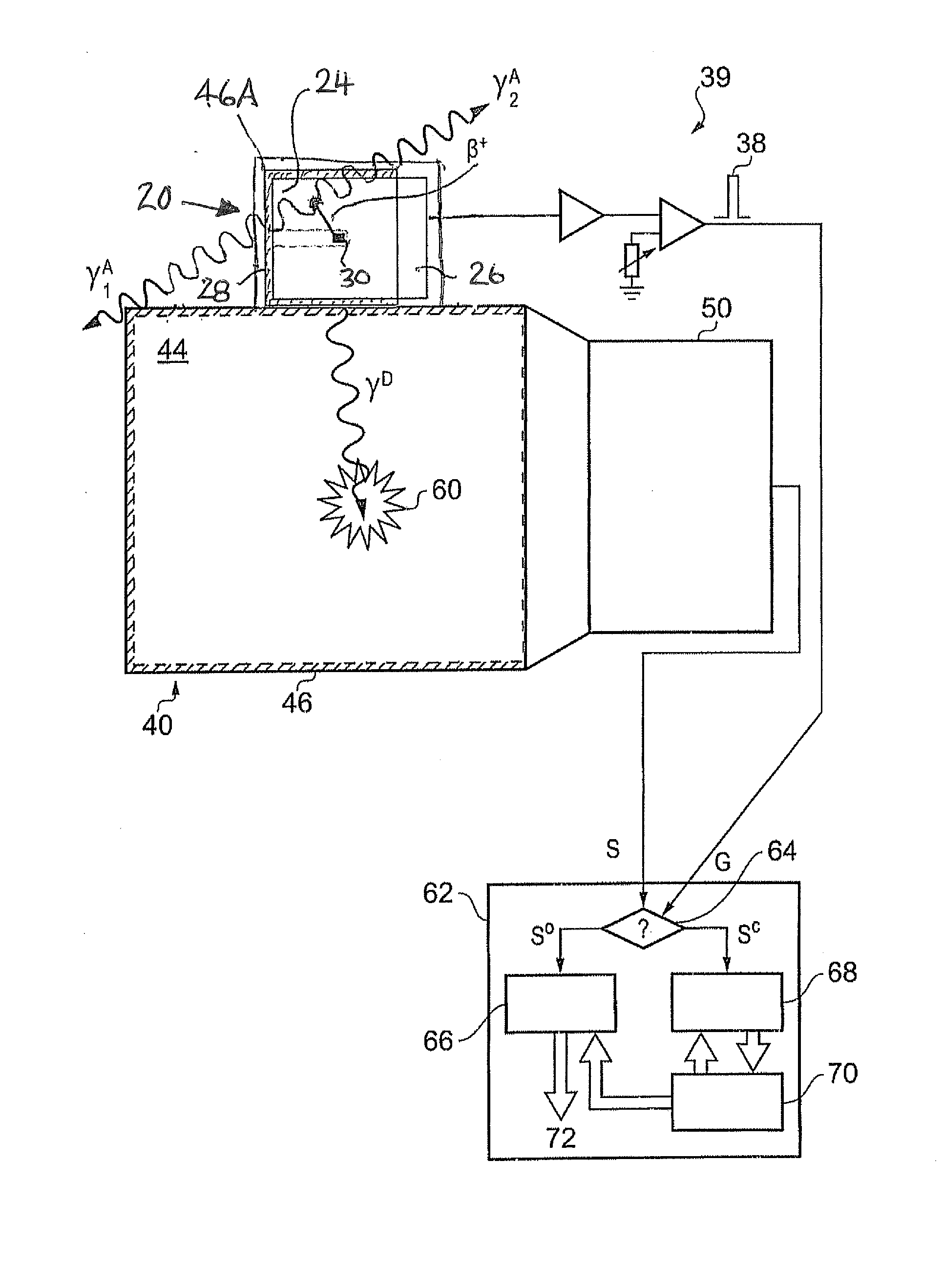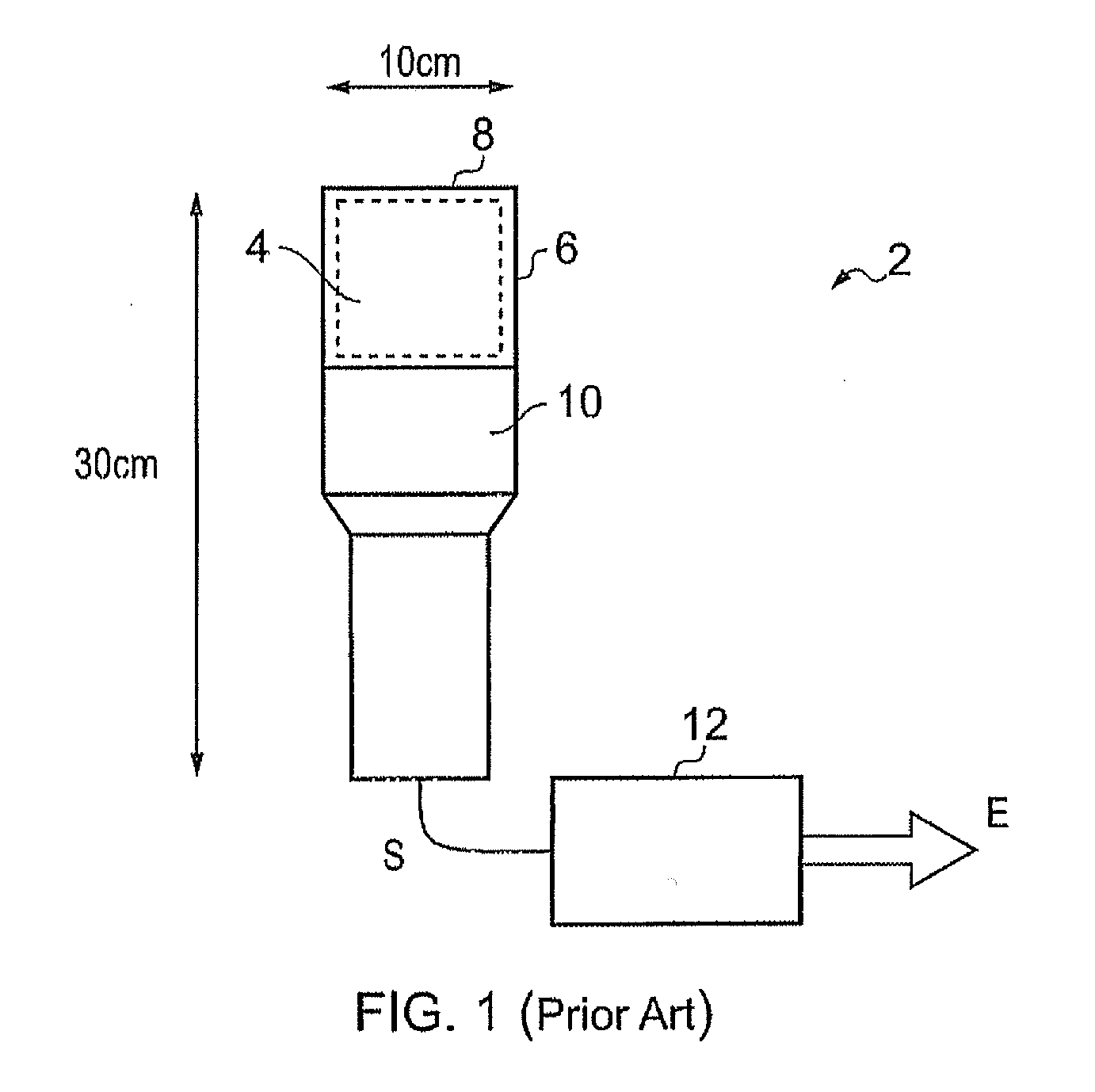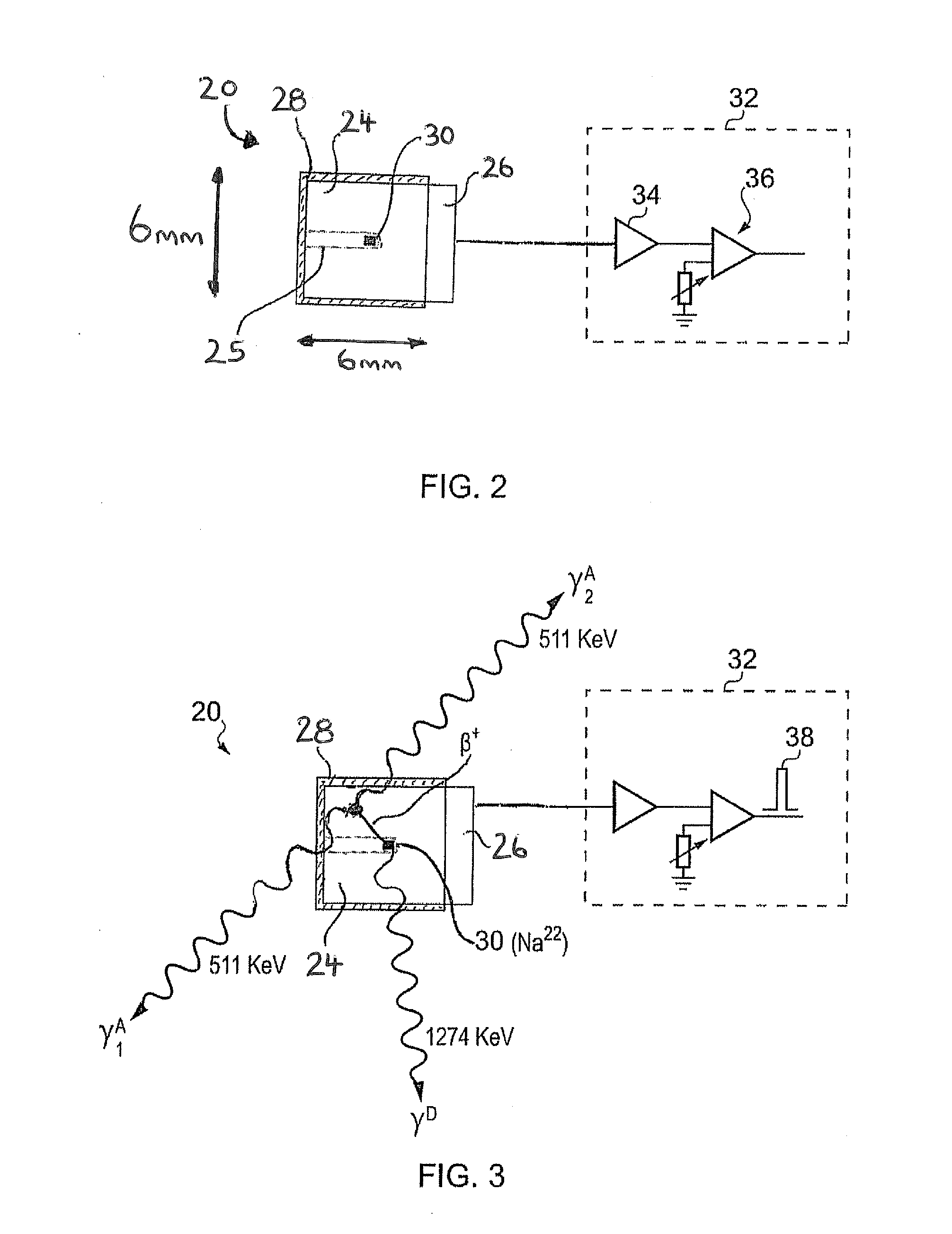Gamma-Ray Spectrometry
- Summary
- Abstract
- Description
- Claims
- Application Information
AI Technical Summary
Benefits of technology
Problems solved by technology
Method used
Image
Examples
Embodiment Construction
[0047]FIG. 2 schematically shows a calibration source 20 according to an embodiment of the invention. The calibration source 20 is based around a deposit of radioactive material 30 comprising a radioactive isotope having a decay transition associated with emission of a radiation particle and a gamma-ray. In this example, the radioactive material comprises a salt of Na-22. Na-22 is associated with a radioactive transition that results in emission of a beta-plus particle (positron) having a maximum energy of around 545 keV, and a gamma-ray having an energy around 1274 keV. Subsequent matter-anti-matter annihilation of the positron further results in the emission of a pair of 511 keV gamma-rays. In this example the radioactive material 30 has an activity of around 100 Bq. This will of course reduce with time, with Na-22 having a half-life of around 2.6 years.
[0048]The calibration source 20 comprises a scintillator body 24, which in this example is generally cuboid with an extent of aro...
PUM
 Login to View More
Login to View More Abstract
Description
Claims
Application Information
 Login to View More
Login to View More - R&D
- Intellectual Property
- Life Sciences
- Materials
- Tech Scout
- Unparalleled Data Quality
- Higher Quality Content
- 60% Fewer Hallucinations
Browse by: Latest US Patents, China's latest patents, Technical Efficacy Thesaurus, Application Domain, Technology Topic, Popular Technical Reports.
© 2025 PatSnap. All rights reserved.Legal|Privacy policy|Modern Slavery Act Transparency Statement|Sitemap|About US| Contact US: help@patsnap.com



